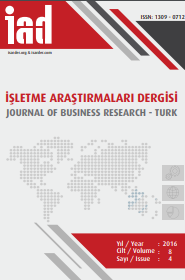ABD Devlet Tahvili Faiz Oranlarındaki Değişimin Kurlara Etkisi; Kırılgan Paralar, Kırılgan Ekonomiler
The Effect of USA Government Bond Rate on Exchange Rates: Fragile Currencies, Fragile Economies
Author(s): Çiğdem Kurt Cihangir, Cihan TanriövenSubject(s): Economy, Supranational / Global Economy, Financial Markets
Published by: Orhan Sağçolak
Keywords: Kalman Filter; The Fragile Five; Crisis; Fragility; Currency;
Summary/Abstract: The effect of changes in interest rates on the exchange rates has been analyzed in the literature for many times. How real or expected changes in interest rates affect the exchange rates may be an important factor for determination of countries’ economic fragilities. In August 2013, Morgan Stanley grouped the countries with regard to sensitivity to USA monetary policy, current deficit, inflation rate, level of foreign debt and economic growth rate. As a result, a group of countries were named as “Fragile Five”. In this study, how the changes in USA 10 year government bond rate affect currency value of countries particularly with high level of foreign debt is analyzed through Kalman filter methodology. It was revealed that one point change in bond rate has statistically significant negative effect at 1%level on currencies rates of all countries except one country. When the results were interpreted for fragile five (Turkey, Brazil, India, South Africa, Indonesia), it was concluded that these countries except for India (10th country) and Indonesia (14th Country) are among top five. Brazil, South Africa and Turkey are the first, third and fourth most affected countries by the FED interest rates respectively. It was showed that the empirical results of this study and fragility ranking differ from the “The Capital Freeze Index” prepared by The Economist.
Journal: İşletme Araştırmaları Dergisi
- Issue Year: 8/2016
- Issue No: 4
- Page Range: 1-14
- Page Count: 14
- Language: Turkish

